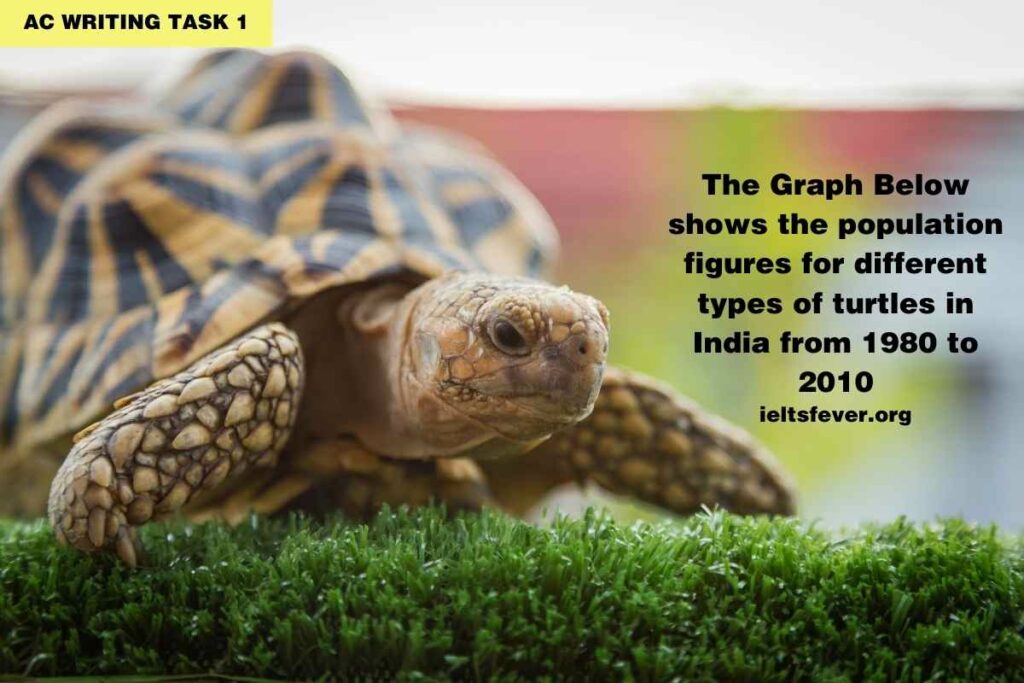The Graph Below shows the population figures for different types of turtles in India from 1980 to 2010
You should spend about 20 minutes on this task.
Sample Answer of The population figures for different types of turtles in India
Sample 1
The line graph elucidates the population data of leather turtles(19), green turtles(38), all species(111), and olive ridley turtles (20) in India over 32 years commencing from 1980.
Overall, it can be seen that the figures for all 4 different types of turtle showed a fluctuated trend. Out of those leatherback and green turtles’ community decreased whereas there was a slight increase in the proportion of all species and olive ridley turtles’ figure experienced an upward trend followed by fluctuation.
In the initial year 1980, the statistic of all sort of turtles was 100, in the following years, their data showed a fluctuated trend. There was a slight increase of 10 units in the number of all species. In 1980, it was 100 after which it reached 110 in 2012 while the data of green turtles decreased steadily and stood at 90 at the end of the period.
The quantity of olive ridley turtle escalated significantly till 1997 afterward its number fluctuated and reached 130 in 2012. By contrast, the population of leatherback turtles decreased dramatically throughout the period. The figure was considerably lower at 60 in 2012.
Sample 2
The given trend illustrates the population figures for different species of Turtles in India for two distinct years 1980 to 2012. Units are measured in index.
Overall, instead of obvious fluctuation, OIive Ridley Turtles recorded the highest population of turtles in the whole period. However, All species declined gradually over time. Whereas green turtles experienced a sharp rise after fluctuating for a long period of time whilst leatherback turtles experienced a sharp rise and later reduced drastically over time. Significant features are discussed in the following paragraphs.
First of all, in the year 1980 Olive Ridley Turtles recorded its first highest population of turtles at 100 million indexes while it slightly increases by 10 million indexes in 1982. However, in 1984, it recorded its second-highest population of turtles at 120 million indexes and gradually recorded some increase and rose significantly to its highest peak in 2012.
In contrast, there was a significant difference from three previous turtles, the Leatherback Turtles which recorded a sharp rise of 100million indexes and in 1986 surged to 15 million indexes whilst from 1988 recorded a gradual decline in its population until it reached a downward slope. All species recorded a higher population from 1980 and later declined gradually over time.
In 1980, it is clearly noted that Green Species recorded a population which remains unchanged at 100million index and later recorded a slight increase of 10million index and remained static not until 1984 when its population reduced drastically and remain to fluctuate thereafter and experienced a sharp rise afterward at the end of the period.
Pages Content

